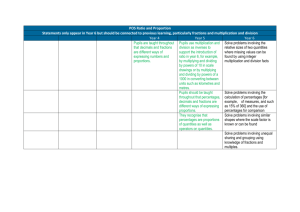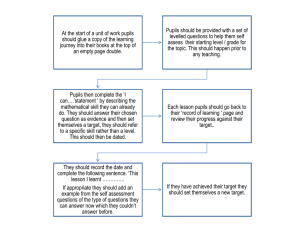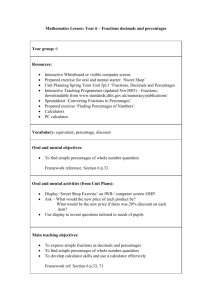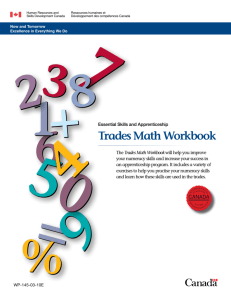POS Ratio and Proportion Statements only appear in Year 6 but
advertisement
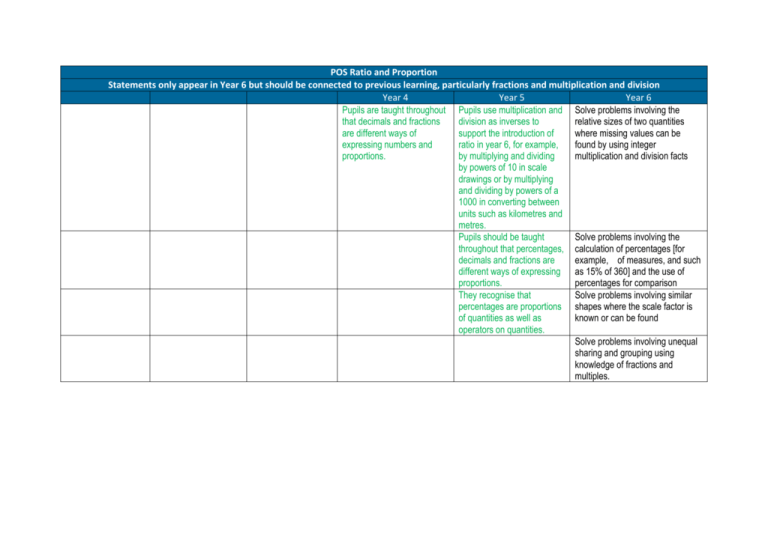
POS Ratio and Proportion Statements only appear in Year 6 but should be connected to previous learning, particularly fractions and multiplication and division Year 4 Year 5 Year 6 Pupils are taught throughout Pupils use multiplication and Solve problems involving the that decimals and fractions division as inverses to relative sizes of two quantities are different ways of support the introduction of where missing values can be expressing numbers and ratio in year 6, for example, found by using integer proportions. by multiplying and dividing multiplication and division facts by powers of 10 in scale drawings or by multiplying and dividing by powers of a 1000 in converting between units such as kilometres and metres. Pupils should be taught Solve problems involving the throughout that percentages, calculation of percentages [for decimals and fractions are example, of measures, and such different ways of expressing as 15% of 360] and the use of proportions. percentages for comparison They recognise that Solve problems involving similar percentages are proportions shapes where the scale factor is of quantities as well as known or can be found operators on quantities. Solve problems involving unequal sharing and grouping using knowledge of fractions and multiples. Year 4 Ratio and Proportion Pupils are taught throughout that decimals and fractions are different ways of expressing numbers and proportions. Understand vocabulary To know that a fraction is a proportion of a whole To know that a decimal is a fraction Pupils use multiplication and division as inverses to support the introduction of ratio in year 6, for example, by multiplying and dividing by powers of 10 in scale drawings or by multiplying and dividing by powers of a 1000 in converting between units such as kilometres and metres. Understand to the power of 10 Understand and use place value Solve simple ratio problems Year 5 Ratio and Proportion Pupils should be taught throughout that percentages, decimals and fractions are different ways of expressing proportions. They recognise that percentages are proportions of quantities as well as operators on quantities. Understand vocabulary To calculate percentages To know that a fraction is a proportion of a whole Understand vocabulary To know that a decimal is a fraction To know that a percentage is a decimal and a fraction. To make relationship links between all three Solve problems involving the relative sizes of two quantities where missing values can be found by using integer multiplication and division facts Know multiplication and division facts Solve missing number problems relating to direct proportion Solve simple ratio problems Year 6 Ratio and Proportion Solve problems involving the calculation of Solve problems involving similar percentages (e.g. of measures) such as 15% of shapes where the scale factor is known 360 and the use of percentages for comparison or can be found Solve problems involving unequal sharing or grouping using knowledge of fractions and multiples Know how to calculate a percentage of a quantity (with and without calculators) Compare parts of a whole quantity using fraction/decimal/percentage and ratio notation. To convert percentages to decimals To convert percentages to fractions Solve problems Understand scale as ratio notation Calculate simple scales (greater and smaller) Compare two shapes and find the simple scale factor
